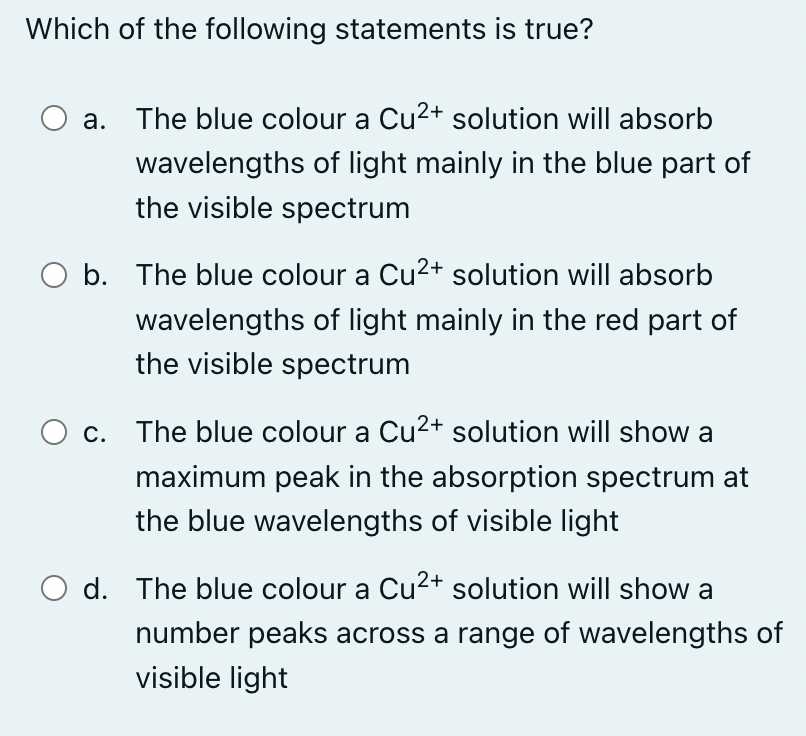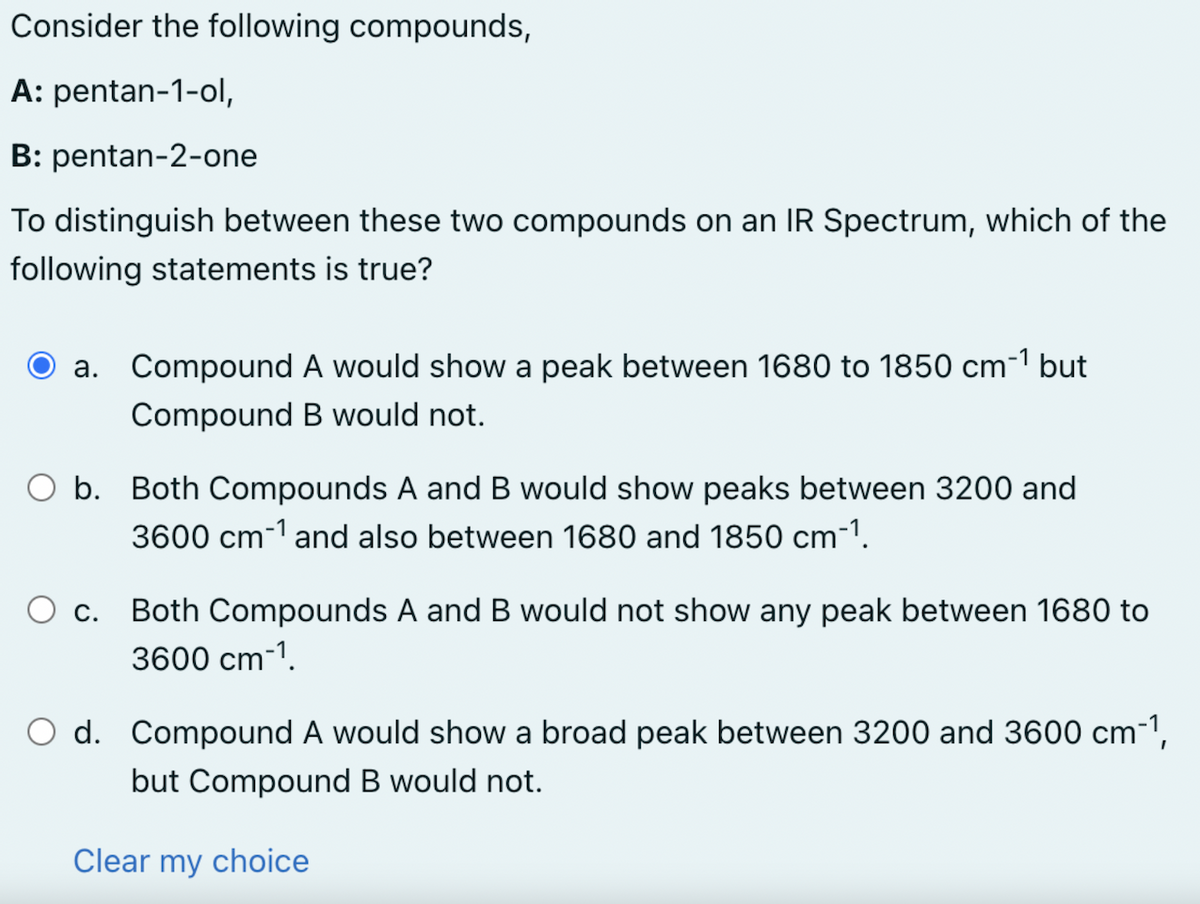Which of the following statements is true? a. The blue colour a Cu²+ solution will absorb wavelengths of light mainly in the blue part of the visible spectrum O b. The blue colour a Cu²+ solution will absorb wavelengths of light mainly in the red part of the visible spectrum c. The blue colour a Cu²+ solution will show a maximum peak in the absorption spectrum at the blue wavelengths of visible light d. The blue colour a Cu²+ solution will show a number peaks across a range of wavelengths of visible light
Which of the following statements is true? a. The blue colour a Cu²+ solution will absorb wavelengths of light mainly in the blue part of the visible spectrum O b. The blue colour a Cu²+ solution will absorb wavelengths of light mainly in the red part of the visible spectrum c. The blue colour a Cu²+ solution will show a maximum peak in the absorption spectrum at the blue wavelengths of visible light d. The blue colour a Cu²+ solution will show a number peaks across a range of wavelengths of visible light
Organic Chemistry
8th Edition
ISBN:9781305580350
Author:William H. Brown, Brent L. Iverson, Eric Anslyn, Christopher S. Foote
Publisher:William H. Brown, Brent L. Iverson, Eric Anslyn, Christopher S. Foote
Chapter13: Nuclear Magnetic Resonance Spectroscopy
Section: Chapter Questions
Problem 13.26P: Ascaridole is a natural product that has been used to treat intestinal worms. Explain why the two...
Related questions
Question
Please answer fast

Transcribed Image Text:Which of the following statements is true?
a. The blue colour a Cu²+ solution will absorb
wavelengths of light mainly in the blue part of
the visible spectrum
O b. The blue colour a Cu²+ solution will absorb
wavelengths of light mainly in the red part of
the visible spectrum
c. The blue colour a Cu²+ solution will show a
maximum peak in the absorption spectrum at
the blue wavelengths of visible light
d. The blue colour a Cu²+ solution will show a
number peaks across a range of wavelengths of
visible light

Transcribed Image Text:Consider the following compounds,
A: pentan-1-ol,
B: pentan-2-one
To distinguish between these two compounds on an IR Spectrum, which of the
following statements is true?
a. Compound A would show a peak between 1680 to 1850 cm-¹ but
Compound B would not.
O b. Both Compounds A and B would show peaks between 3200 and
3600 cm-¹ and also between 1680 and 1850 cm-1.
O c.
Both Compounds A and B would not show any peak between 1680 to
3600 cm-1.
O d. Compound A would show a broad peak between 3200 and 3600 cm-¹,
but Compound B would not.
Clear my choice
Expert Solution
This question has been solved!
Explore an expertly crafted, step-by-step solution for a thorough understanding of key concepts.
Step by step
Solved in 3 steps

Knowledge Booster
Learn more about
Need a deep-dive on the concept behind this application? Look no further. Learn more about this topic, chemistry and related others by exploring similar questions and additional content below.Recommended textbooks for you

Organic Chemistry
Chemistry
ISBN:
9781305580350
Author:
William H. Brown, Brent L. Iverson, Eric Anslyn, Christopher S. Foote
Publisher:
Cengage Learning

Organic Chemistry: A Guided Inquiry
Chemistry
ISBN:
9780618974122
Author:
Andrei Straumanis
Publisher:
Cengage Learning

Organic Chemistry
Chemistry
ISBN:
9781305580350
Author:
William H. Brown, Brent L. Iverson, Eric Anslyn, Christopher S. Foote
Publisher:
Cengage Learning

Organic Chemistry: A Guided Inquiry
Chemistry
ISBN:
9780618974122
Author:
Andrei Straumanis
Publisher:
Cengage Learning